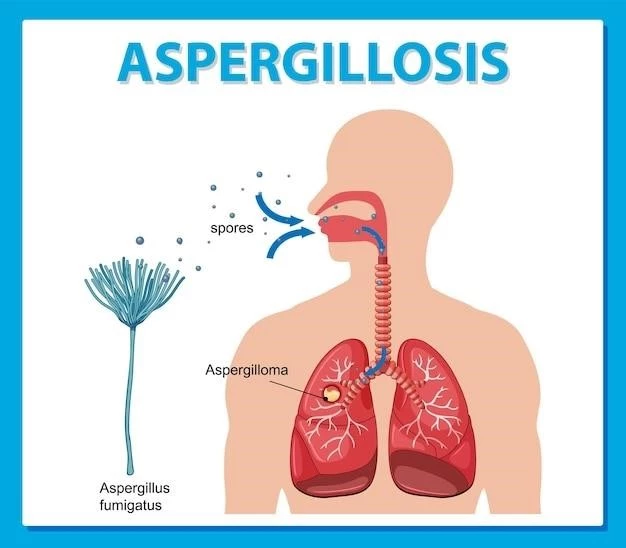Understanding Acrospiroma and its Management
Understanding the causes of Acrospiroma is crucial for effective management․ It is essential to recognize the symptoms early to seek appropriate diagnosis and treatment․ Surgical options play a key role in addressing Acrospiroma․ Learn about the prognosis, recovery, and risk factors associated with this condition․
Causes of Acrospiroma
Acrospiroma, also known as poroma, is a rare tumor that originates from eccrine sweat glands in the skin․ The exact cause of Acrospiroma is not fully understood, but it is believed to be linked to genetic mutations or alterations in the sweat gland cells․ Exposure to radiation or certain chemicals may also play a role in the development of Acrospiroma․
It is important to note that while the precise triggers for Acrospiroma remain unclear, individuals with a family history of similar tumors or genetic predispositions may have an increased risk․ Understanding these potential causes can help in identifying individuals who may be at higher risk for developing Acrospiroma and can guide prevention efforts․
Symptoms of Acrospiroma
The symptoms of Acrospiroma can vary depending on the size and location of the tumor․ Common signs include a painless, slow-growing nodule or bump on the skin, usually on the hands, feet, fingers, or toes․ These tumors are typically firm to the touch and may be pink, reddish, or skin-colored․
As Acrospiroma grows, it can sometimes cause itching or tenderness in the affected area․ In some cases, the tumor may ulcerate or bleed․ Due to the non-specific nature of these symptoms, it is essential to consult a healthcare provider if you notice any unusual skin changes or growths․
Early detection and diagnosis of Acrospiroma are key to successful treatment outcomes․ If you experience any concerning symptoms or changes in the appearance of your skin, do not hesitate to seek medical evaluation and guidance․ Remember, prompt intervention can lead to better management and potential recovery from Acrospiroma․
Diagnosis and Treatment of Acrospiroma
Diagnosing Acrospiroma typically involves a physical examination by a dermatologist or healthcare provider․ A skin biopsy may be performed to confirm the diagnosis․ Imaging tests like ultrasound or MRI can help determine the extent of the tumor․
Once diagnosed, treatment options for Acrospiroma may include surgical removal of the tumor․ In cases where the tumor is small and asymptomatic, a watch-and-wait approach under medical supervision may be considered․ Laser therapy or cryosurgery could be options for specific cases․
It is essential to discuss with your healthcare team the most suitable treatment plan based on the size, location, and individual health considerations․ Regular follow-ups are crucial to monitor any changes in the tumor or new symptoms․ Adhering to the prescribed treatment plan and attending scheduled appointments can aid in managing Acrospiroma effectively․
Surgical Options for Acrospiroma
When it comes to dealing with Acrospiroma, surgical removal is a common and effective treatment approach․ The type of surgery recommended depends on the size, location, and characteristics of the tumor․ Excisional surgery involves cutting out the tumor along with a margin of healthy tissue surrounding it․
In cases where the tumor is large or difficult to access, Mohs micrographic surgery may be considered․ This precise technique involves removing thin layers of skin and examining them under a microscope until no abnormal cells remain․ This method aims to minimize the removal of healthy tissue while ensuring complete tumor removal․
Your healthcare provider will determine the most suitable surgical option based on various factors such as tumor size, depth, and potential risk of recurrence․ It is crucial to follow post-operative care instructions diligently to promote proper healing and reduce the risk of complications․ Be sure to discuss any concerns or questions you may have with your medical team․
Prognosis and Recovery from Acrospiroma
The prognosis for Acrospiroma is generally favorable, especially with early detection and appropriate treatment․ Following surgical removal, the recovery process varies depending on the size of the tumor and the type of surgery performed․ Most patients experience a smooth recovery with minimal complications․
Regular follow-up appointments are essential to monitor healing progress and check for any signs of recurrence․ Your healthcare provider will guide you on post-operative care, including wound care, activity restrictions, and possible preventive measures to reduce the risk of complications or tumor regrowth․

Recovery from Acrospiroma surgery may involve some discomfort, swelling, or scarring, but these issues typically improve over time․ It is crucial to adhere to the recommended follow-up schedule and inform your healthcare team of any unusual symptoms or concerns during the recovery period․ With proper care and monitoring, most individuals can expect a successful recovery from Acrospiroma․
Risk Factors for Acrospiroma
Several factors may increase the risk of developing Acrospiroma․ These include a family history of similar tumors, genetic predispositions, and certain syndromes like Cowden syndrome․ Exposure to radiation or chemicals in the workplace may also contribute to the development of Acrospiroma․
Individuals with a history of skin conditions or previous radiation therapy may have a higher risk of Acrospiroma․ It is important to be aware of these risk factors and discuss any relevant family medical history with your healthcare provider․ Early detection and timely intervention can help in effectively managing and treating Acrospiroma․
While not all risk factors can be controlled, leading a healthy lifestyle and taking precautions to protect your skin from harmful chemicals or radiation when possible may help reduce the risk of developing this type of tumor․ Regular skin exams and prompt evaluation of any skin changes are important for early detection and treatment of Acrospiroma․
Management of Acrospiroma-related Pain
Managing pain associated with Acrospiroma is crucial for improving quality of life․ Over-the-counter pain relievers like acetaminophen or ibuprofen can help alleviate mild discomfort․ Topical creams or ointments containing lidocaine or capsaicin may also provide relief․
If pain persists or worsens, prescription pain medications may be necessary․ Your healthcare provider can prescribe stronger pain relievers or recommend other treatments like nerve blocks or corticosteroid injections to manage pain more effectively․ Physical therapy or relaxation techniques such as meditation and yoga can also be beneficial․
It’s important to communicate openly with your healthcare team about your pain levels and any changes in symptoms․ They can adjust your treatment plan accordingly to address your pain while considering any underlying conditions or potential side effects․ By actively managing Acrospiroma-related pain, you can enhance your comfort and overall well-being․
Lifestyle Changes for Acrospiroma Patients
Implementing lifestyle modifications can complement medical treatment and support overall health for Acrospiroma patients․ Maintaining good skincare habits, such as moisturizing regularly and protecting the skin from UV radiation, is essential․ Avoiding exposure to harmful chemicals and radiation whenever possible can also help prevent skin complications․
Following a balanced diet rich in fruits, vegetables, whole grains, and lean proteins can promote skin health and boost the immune system․ Staying hydrated by drinking an adequate amount of water daily is important for skin hydration and overall well-being․ Regular exercise can help improve circulation and reduce stress․
It is advisable for Acrospiroma patients to avoid smoking and excessive alcohol consumption, as these habits can negatively impact skin health and overall recovery․ Prioritizing mental health by managing stress levels through relaxation techniques, mindfulness, or counseling can be beneficial․ Collaborating with healthcare providers to create a personalized lifestyle plan can enhance the management of Acrospiroma and contribute to a healthier lifestyle․
